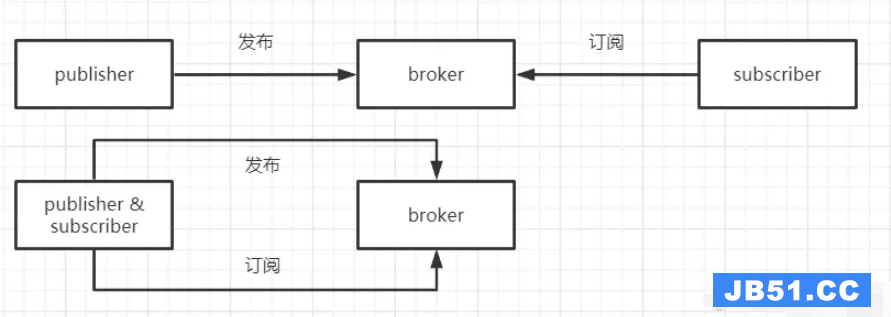我正在写一个需要用户登录的应用程序.
我想通过Google实现,并按照以下文章设置我的登录活动LoginActivity:
> Getting Started with the Google+ Platform for Android
> Google+ Sign-in for Android
流程:
>用户打开我的应用程序 – MainActivity
>它检查用户是否已登录
>如果用户尚未登录,则会将用户重定向到LoginActivity.否则,它仍然在MainActivity.
以下是LoginActivity.java的代码:
包com.noideaBox.googlelogin;
import com.google.android.gms.common.ConnectionResult; import com.google.android.gms.common.SignInButton; import com.google.android.gms.common.api.Googleapiclient; import com.google.android.gms.common.api.Googleapiclient.ConnectionCallbacks; import com.google.android.gms.common.api.Googleapiclient.OnConnectionFailedListener; import com.google.android.gms.plus.Plus; import com.google.android.gms.plus.model.people.Person; import android.app.PendingIntent; import android.content.Intent; import android.content.IntentSender.SendIntentException; import android.os.Bundle; import android.support.v4.app.FragmentActivity; import android.util.Log; import android.view.View; import android.widget.Button; import android.widget.TextView; import android.widget.Toast; public class LoginActivity extends FragmentActivity implements ConnectionCallbacks,OnConnectionFailedListener,View.OnClickListener { private static final String TAG = "android-plus-quickstart"; private static final int STATE_DEFAULT = 0; private static final int STATE_SIGN_IN = 1; private static final int STATE_IN_PROGRESS = 2; private static final int RC_SIGN_IN = 0; private static final String SAVED_PROGRESS = "sign_in_progress"; private Googleapiclient mGoogleapiclient; // We use mSignInProgress to track whether user has clicked sign in. // mSignInProgress can be one of three values: // // STATE_DEFAULT: The default state of the application before the user // has clicked 'sign in',or after they have clicked // 'sign out'. In this state we will not attempt to // resolve sign in errors and so will display our // Activity in a signed out state. // STATE_SIGN_IN: This state indicates that the user has clicked 'sign // in',so resolve successive errors preventing sign in // until the user has successfully authorized an account // for our app. // STATE_IN_PROGRESS: This state indicates that we have started an intent to // resolve an error,and so we should not start further // intents until the current intent completes. private int mSignInProgress; // Used to store the PendingIntent most recently returned by Google Play // services until the user clicks 'sign in'. private PendingIntent mSignInIntent; private SignInButton mSignInButton; private Button mSignOutButton; private Button mRevokeButton; private TextView mStatus; @Override public void onCreate(Bundle savedInstanceState) { super.onCreate(savedInstanceState); setContentView(R.layout.activity_login); mSignInButton = (SignInButton) findViewById(R.id.sign_in_button); mSignOutButton = (Button) findViewById(R.id.sign_out_button); mRevokeButton = (Button) findViewById(R.id.revoke_access_button); mStatus = (TextView) findViewById(R.id.sign_in_status); mSignInButton.setonClickListener(this); mSignOutButton.setonClickListener(this); mRevokeButton.setonClickListener(this); if (savedInstanceState != null) { mSignInProgress = savedInstanceState.getInt(SAVED_PROGRESS,STATE_DEFAULT); } mGoogleapiclient = build_Googleapiclient(); } @Override protected void onStart() { super.onStart(); mGoogleapiclient.connect(); } @Override protected void onStop() { super.onStop(); if (mGoogleapiclient.isConnected()) { mGoogleapiclient.disconnect(); } } @Override protected void onSaveInstanceState(Bundle outState) { super.onSaveInstanceState(outState); outState.putInt(SAVED_PROGRESS,mSignInProgress); } @Override public void onClick(View v) { if (!mGoogleapiclient.isConnecting()) { // We only process button clicks when Googleapiclient is not // transitioning // between connected and not connected. switch (v.getId()) { case R.id.sign_in_button: mStatus.setText(R.string.status_signing_in); resolveSignInError(); break; case R.id.sign_out_button: // We clear the default account on sign out so that Google Play // services will not return an onConnected callback without user // interaction. Plus.AccountApi.clearDefaultAccount(mGoogleapiclient); mGoogleapiclient.disconnect(); mGoogleapiclient.connect(); break; case R.id.revoke_access_button: // After we revoke permissions for the user with a // Googleapiclient // instance,we must discard it and create a new one. Plus.AccountApi.clearDefaultAccount(mGoogleapiclient); // Our sample has caches no user data from Google+,however we // would normally register a callback on // revokeAccessAnddisconnect // to delete user data so that we comply with Google developer // policies. Plus.AccountApi.revokeAccessAnddisconnect(mGoogleapiclient); mGoogleapiclient = build_Googleapiclient(); mGoogleapiclient.connect(); break; } } } /* * onConnected is called when our Activity successfully connects to Google * Play services. onConnected indicates that an account was selected on the * device,that the selected account has granted any requested permissions * to our app and that we were able to establish a service connection to * Google Play services. */ @Override public void onConnected(Bundle connectionHint) { // Reaching onConnected means we consider the user signed in. Log.i(TAG,"onConnected"); // Update the user interface to reflect that the user is signed in. mSignInButton.setEnabled(false); mSignOutButton.setEnabled(true); mRevokeButton.setEnabled(true); // Retrieve some profile information to personalize our app for the // user. Person currentUser = Plus.PeopleApi.getCurrentPerson(mGoogleapiclient); mStatus.setText(String.format( getResources().getString(R.string.signed_in_as),currentUser.getdisplayName() )); // Indicate that the sign in process is complete. mSignInProgress = STATE_DEFAULT; Toast.makeText(this,mStatus.getText(),Toast.LENGTH_LONG).show(); } /* * onConnectionFailed is called when our Activity Could not connect to * Google Play services. onConnectionFailed indicates that the user needs to * select an account,grant permissions or resolve an error in order to sign * in. */ @Override public void onConnectionFailed(ConnectionResult result) { // Refer to the javadoc for ConnectionResult to see what error codes // might // be returned in onConnectionFailed. Log.i(TAG,"onConnectionFailed: ConnectionResult.getErrorCode() = " + result.getErrorCode()); if (mSignInProgress != STATE_IN_PROGRESS) { // We do not have an intent in progress so we should store the // latest // error resolution intent for use when the sign in button is // clicked. mSignInIntent = result.getResolution(); if (mSignInProgress == STATE_SIGN_IN) { // STATE_SIGN_IN indicates the user already clicked the sign in // button // so we should continue processing errors until the user is // signed in // or they click cancel. resolveSignInError(); } } // In this sample we consider the user signed out whenever they do not // have // a connection to Google Play services. onSignedOut(); } /* * Starts an appropriate intent or dialog for user interaction to resolve * the current error preventing the user from being signed in. This Could be * a dialog allowing the user to select an account,an activity allowing the * user to consent to the permissions being requested by your app,a setting * to enable device networking,etc. */ private void resolveSignInError() { if (mSignInIntent != null) { // We have an intent which will allow our user to sign in or // resolve an error. For example if the user needs to // select an account to sign in with,or if they need to consent // to the permissions your app is requesting. try { // Send the pending intent that we stored on the most recent // OnConnectionFailed callback. This will allow the user to // resolve the error currently preventing our connection to // Google Play services. mSignInProgress = STATE_IN_PROGRESS; startIntentSenderForResult( mSignInIntent.getIntentSender(),RC_SIGN_IN,null,0 ); } catch (SendIntentException e) { Log.i(TAG,"Sign in intent Could not be sent: " + e.getLocalizedMessage()); // The intent was canceled before it was sent. Attempt to // connect to // get an updated ConnectionResult. mSignInProgress = STATE_SIGN_IN; mGoogleapiclient.connect(); } } } @Override protected void onActivityResult(int requestCode,int resultCode,Intent data) { switch (requestCode) { case RC_SIGN_IN: if (resultCode == RESULT_OK) { // If the error resolution was successful we should continue // processing errors. mSignInProgress = STATE_SIGN_IN; } else { // If the error resolution was not successful or the user // canceled,// we should stop processing errors. mSignInProgress = STATE_DEFAULT; } if (!mGoogleapiclient.isConnecting()) { // If Google Play services resolved the issue with a dialog then // onStart is not called so we need to re-attempt connection // here. mGoogleapiclient.connect(); } break; } } @Override public void onConnectionSuspended(int cause) { // The connection to Google Play services was lost for some reason. // We call connect() to attempt to re-establish the connection or get a // ConnectionResult that we can attempt to resolve. mGoogleapiclient.connect(); } private Googleapiclient build_Googleapiclient() { // When we build the Googleapiclient we specify where connected and // connection Failed callbacks should be returned,which Google Apis our // app uses and which OAuth 2.0 scopes our app requests. return new Googleapiclient.Builder(this) .addConnectionCallbacks(this) .addOnConnectionFailedListener(this) .addApi(Plus.API,null) .addScope(Plus.ScopE_PLUS_LOGIN) .build(); } private void onSignedOut() { // Update the UI to reflect that the user is signed out. mSignInButton.setEnabled(true); mSignOutButton.setEnabled(false); mRevokeButton.setEnabled(false); mStatus.setText(R.string.status_signed_out); } }



